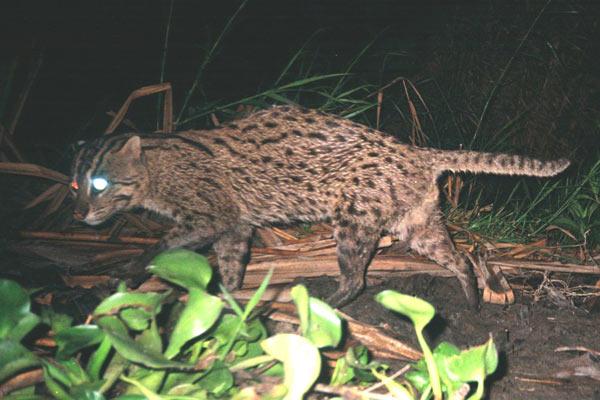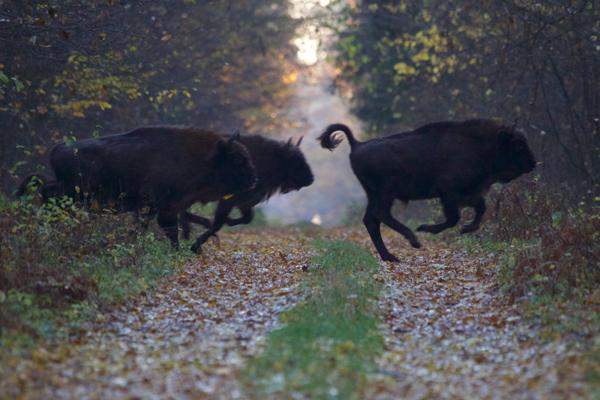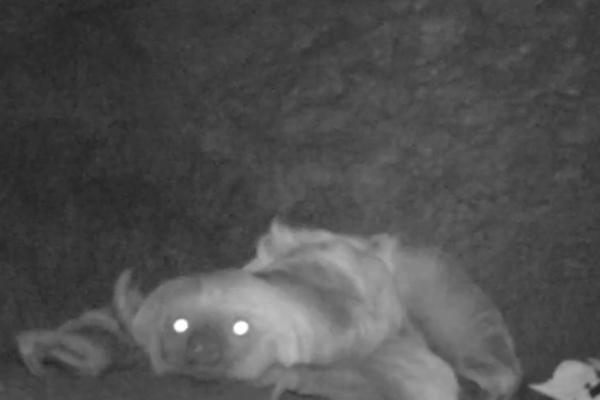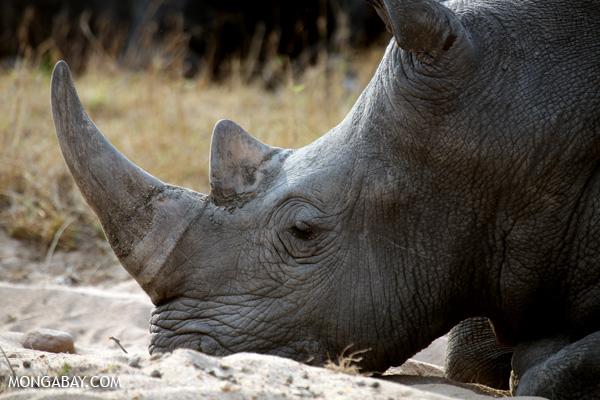It’s no secret that when it comes to the wild cats of Asia—and, really, cats in general—tigers get all the press. In fact, tigers—down to an estimated 3,200 individuals—arguably dominate conservation across Asia. But as magnificent, grand, and endangered as the tigers are, there are a number of other felines in the region that are much less studied—and may be just as imperiled.
A new, special edition of Cat News from the IUCN’s Cat Specialist Group attempts to shine a light on Southeast Asia’s other cats: nine small-to-medium sized cats that are not a part of the big cat genus, Panthera. Of these nine, cat conservationists say two are in particular need of research and conservation attention: the flat-headed cat (Prionailurus planiceps) and the fishing cat (Prionailurus viverrinus).
Most of Southeast Asia’s cats have been studied in recent years using remote camera trap data in surveys set up for bigger cats, such as tigers and leopards, or other charismatic mammals. While these camera traps have revolutionized our understanding of some cryptic cats, like Borneo’s bay cat (Catopuma badia), which appears more common than long-believed. It has also meant that species not found in so-called tiger areas have been overlooked.
“There are still gaps in our understanding because most of the camera-trap data comes from forest habitats (where tigers predominate) rather than wetlands, streams, and scrub forest which are evidently the more preferred habitats for [the fishing cat, flat-headed cat, and jungle cat],” conservationists Christine Breitenmoser, Will Duckworth, and Antony Lynam told mongabay.com in a recent interview. “These species are conservation priorities largely due to their rarity and levels of threat faced. If there were lots of them still around, more should be turning up in trade but they are not.”
The biggest threat facing the region’s cat species is habitat destruction. Parts of Southeast Asia now have some of the highest deforestation rates on the planet—Indonesia and Malaysia—exacerbated by the rapid spread of monoculture plantations, such as oil palm, pulp, and rubber. Meanwhile, much of the human pressure in the region is focused on wetlands, key habitat for both the fishing cat and the flat-headed cat. Hunting is also worsening the situation.
“Small cats are not usually direct targets for poachers but they are collateral damage that gets caught in snare-lines along with other types of animals,” the scientists said. “For clouded leopards, favored prey species such as wild pig and muntjac are also subject to hunting for wild meat, so prey loss is additionally a key threat.”
So, how do we keep these cats around?
“Maintaining large tracts of forest habitat, keeping roads out of these places, and actively protecting them from poaching and other disturbances, should be a prescription for stabilizing populations for many wild cats,” the scientists say.
In an October 2014 interview, the authors of the introductory paper in the special issue told mongabay.com why these cats have been long neglected and what needs to happen to better understand and, ultimately, protect them.
INTERVIEW WITH CHRISTINE BREITENMOSER, WILL DUCKWORTH, AND ANTONY LYNAM
Mongabay: Why should these nine cat species—those found in South East Asia not including tigers and leopard—be a higher conservation and research priority?
Christine Breitenmoser, Will Duckworth, and Antony Lynam: The smaller cat species are generally poorly known in terms of basic status and distribution. We know even less about their ecology, habitat preferences, and activity patterns. This is because there are few dedicated field studies while most of the information available comes from so-called ‘by-catch’ data from camera-trap studies done for the larger cats, especially tigers. This in itself reflects the dearth of available conservation funds for species that are not flamboyant, charismatic species with high commercial value. For these reasons, the smaller cats deserve more attention from conservationists and researchers.
While it is clear that there are no imminent threats of regional extinction to most of the species, three of them (one of which, flat-headed cat, occurs only in Southeast Asia) might well be seriously threatened. For two of these (flat-headed cat and fishing cat) the available information is too poor to know exactly where and how to deploy resources (assuming they could be secured) to conserve them. For the third species (jungle cat) one priority area is clear (northern Cambodia) but another area (dry-zone Myanmar) that might well hold large population is unsurveyed. In sum: without specific conservation measures in their favor, continued major declines in SE Asia are likely for these three species, and without greatly increased further research, any conservation measures may be inefficient and even ineffective.
Mongabay: How have camera traps revolutionized our understanding of South East Asia’s medium and small cats?
Christine Breitenmoser, Will Duckworth, and Antony Lynam: Wild cats tend to be hard to observe due to their secretive habits, because most of them live in dense tropical forests and are at least partly nocturnal and thus require specialized survey methods to detect them. It’s for these reasons that spotlighting and camera-traps are most useful survey methods for smaller cats. Camera-traps are remotely-triggered devices that are usually placed at ground level where they detect movements of all wildlife (and human) traffic passing in front of the beam. So camera-traps set for larger cats along trails at ground level have picked up the portion of smaller cat traffic that uses these same habitats. What they do not pick up—unless specifically set to do so—is the activity above the ground, or off trails, or in specialized habitats such as wetlands, open forest or scrubland. The three species of most conservation concern in Southeast Asia (flat-headed cat, fishing cat, and jungle cat) are all inhabitants of wetlands, open forest and scrubland. This is why they need specific research and conservation—it is not happening ‘on the back’ of the famous species.
Mongabay: Why should fishing cat and the flat-headed cat be made the conservation priorities of this group of nine species?
Christine Breitenmoser, Will Duckworth, and Antony Lynam: When we put all the camera-trap data together, we still find that for some species, such as fishing cat, flat-headed cat and jungle cat, there are still gaps in our understanding because most of the camera-trap data comes from forest habitats (where tigers predominate) rather than wetlands, streams, and scrub forest which are evidently the more preferred habitats for these species. These species are conservation priorities largely due to their rarity and levels of threat faced. If there were lots of them still around, more should be turning up in trade but they are not, and for all of them there are good a priori reasons based on habitat to assume major declines.
Mongabay: How might the chosen habitat of flat-headed cats and fishing cats make them much more vulnerable than other cats in the group?
Christine Breitenmoser, Will Duckworth, and Antony Lynam: Wetlands such as peat swamps are being reclaimed for oil palm in Indonesia and Malaysia. In Thailand coastal lakes are being converted for agriculture and aquaculture. Wetlands are foci of human settlement and activity so animals living in them must be tolerant of human activities. In most of Southeast Asia, non-specific hunting of mammals occurs wherever people live and go, so wetland species are typically particularly threatened if they are even somewhat susceptible to human hunting. And habitat loss is likely to be exacerbating outright reductions of populations of fishing and flat-headed cats by causing the animals to share smaller areas of habitat with ever-increasing numbers of people. For example, they need to forage more around human settlements where they end getting poached by people who worry about losing their chickens and captive birds.
The flat-headed cat is associated with wetlands and lowland areas. Its main threat is on-going transformation of forested areas to monoculture plantations, as the species seems not to be able to use these human-dominated habitats. Therefore it is very important for the long-term survival of flat-headed cats to conserve land near fresh-water rivers and peat swamp forests.
Mongabay: Why should we be less concerned about the jungle cat?
Christine Breitenmoser, Will Duckworth, and Antony Lynam: The jungle cat has a much wider distribution than the fishing cat and the flat-headed cat. It occurs across Asia over to Egypt and is very common in some parts of its range. The jungle cat is associated with wetland—habitats with water and dense vegetative cover, especially reed swamps, marsh, and littoral and riparian environments. However it evidently does not need such large complexes or contiguous areas as do fishing and flat-headed cats. Jungle cats can be found in a variety of habitats, ranging from desert (where it is found near oases or along riverbeds) to grassland, shrubby woodland and dry deciduous forest. They appear to do OK in disturbed habitats and scrub forests. In Indochina, they occur in areas with extensive deciduous dipterocarp forests with at least scattered surface water. In Lao and Cambodia, seasonal waterholes inside forested lands are being converted into economic land concessions for rubber. Presumably, this is a threat to the species in that part of its range.
Mongabay: The bay cat, found only in Borneo, has long been considered one of the world’s most cryptic cats. It was only photographed in 1997 and caught on video for the first time in 2009. So, why should recent research make us more hopeful for this species?
Christine Breitenmoser, Will Duckworth, and Antony Lynam: It was formerly thought to be a great rarity. Camera-trapping has revolutionized understanding its distribution and habitat use. Today we know that the bay cat is widespread across Borneo except extreme lowlands with mangroves and swamp forests. The bay cat does not seem to use logging features, i.e. roads and trails, and might therefore be underrepresented in camera trap studies. Clouded leopard and marbled cat have higher probabilities of detection along logging features and skid trails for clouded leopard and marbled cat, where camera traps often are set.
Mongabay: How are the two species of clouded leopard faring?
Christine Breitenmoser, Will Duckworth, and Antony Lynam: The clouded leopard in Indochina has turned up in camera-traps widely in evergreen forest habitats across the range. From the limited ecological data we have clouded leopards appear to share Asiatic leopard’s preference for places with wild pig and muntjac suggesting they may be important as prey. There may be some level of incidental hunting in certain countries with hides of clouded leopards being traded in border markets (e.g. Thai-Myanmar, Lao-Vietnam, Myanmar-China) but otherwise it appears to be doing OK in places with stable forest cover.
The Sunda clouded leopard has a widespread distribution over a large portion of Borneo with the exception of South Kalimantan. As the species is closely associated with forest and with the current declining rate of suitable habitat the population is declining. So far it has not been confirmed in palm oil plantations.
Mongabay: What makes the leopard cat so resilient?
Christine Breitenmoser, Will Duckworth, and Antony Lynam: The leopard cat is widespread and abundant and occurs in a wide variety of habitats. It is tolerant to habitat alteration and persists in human-dominated landscapes. It can use at least as part of its home range palm oil and rubber plantations where rats are common. Why it has this tolerance to disturbance, we don’t yet fully understand.
Mongabay: Why does hunting and snare hunting pose such a threat to these cat species? Are they caught in snares or do the snares and other overhunting kill off suitable prey?
Christine Breitenmoser, Will Duckworth, and Antony Lynam: Snaring is a technique used by poachers across Indochina, but especially in Lao, Cambodia, and Vietnam, and in neighbor countries where nationals of these countries are poaching (e.g. Thailand, Indonesia and Malaysia), and especially where demand for wild meat is high, and markets for wild meat exist, so poaching levels to supply the trade are relatively high, and where trade enforcement is weak.
Small cats are not usually direct targets for poachers but they are collateral damage that gets caught in snare-lines along with other types of animals. For clouded leopards, favored prey species such as wild pig and muntjac are also subject to hunting for wild meat, so prey loss is additionally a key threat.
Mongabay: What needs to be done to ensure these nine species are still around in a hundred years time? What are the most urgent priorities?
Christine Breitenmoser, Will Duckworth, and Antony Lynam: Maintaining large tracts of forest habitat, keeping roads out of these places, and actively protecting them from poaching and other disturbances, should be a prescription for stabilizing populations for many wild cats. For fishing cat that is evidently dependent on wetlands, protecting these places, and avoiding encroachment from human settlements or conversion for land development, are obvious priorities. For flat-headed cat more research is needed to understand what are the habitat preferences and sensitivities to disturbance, and therefore what needs to be managed to maintain the species.
Mongabay: Are there any countries or regions where conservation efforts are particularly needed to protect these species going forward?
Christine Breitenmoser, Will Duckworth, and Antony Lynam: Places where forest habitats and wetlands are at risk of wholesale conversion for agriculture, infrastructure development, and human settlement are clearly the places where conservation needs to be focused for all of the small cats, especially advocacy and engagement with policy-makers and land-use planners.
Mongabay: Southeast Asia’s rainforests are often viewed as some of the most imperiled and degraded the world over. Moreover, overhunting for consumption and traditional medicine has wiped out many animal populations, leading to ‘empty forest syndrome’ in many parts of the region. Why should we still have hope for these cat species, given the current trends?
Christine Breitenmoser, Will Duckworth, and Antony Lynam: There is no evidence, yet, that hunting alone has led to loss of individual species of small cats. This is different for the large cats, where putative extinctions of tigers from Cambodia, and near-extinctions in Lao and Vietnam are examples of how targeted hunting can lead to a species being wiped out. Small cats don’t seem to be targeted for human consumption, and while large-scale snaring can lead to incidental killing, hunting is unlikely to be the main driver for species loss for any of the species.
SOUTHEAST ASIA CAT SPECIES:
- Asiatic golden cat (Catopuma temminckii), Near Threatened
- Bay cat (Catopuma badia), Endangered
- Clouded leopard (Neofelis nebulosa), Vulnerable
- Fishing cat (Prionailurus viverrinus), Endangered
- Flat-headed cat (Prionailurus planiceps), Endangered
- Jungle cat (Felis chaus), Least Concern
- Leopard (Panthera pardus), Near Threatened
- Leopard cat (Prionailurus bengalensis), Least Concern
- Marbled cat (Pardofelis marmorata), Vulnerable
- Sunda clouded leopard (Neofelis diardi), Vulnerable
- Tiger (Panthera tigris), Endangered
This article was originally written and published by Jeremy Hance, a contributing writer for news.mongabay.com. For the original article and more information, please click HERE.




